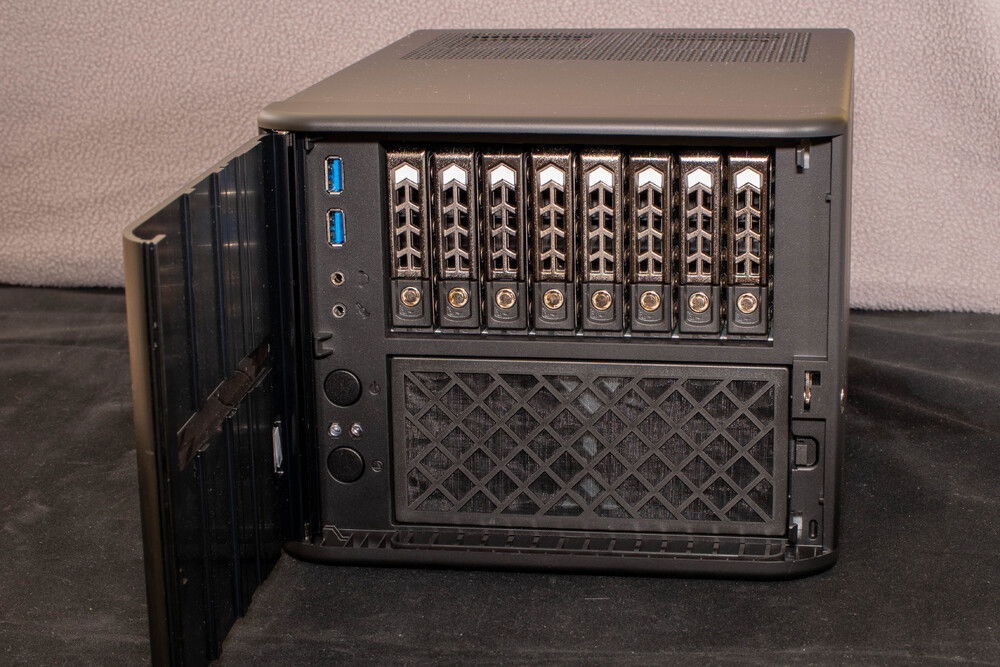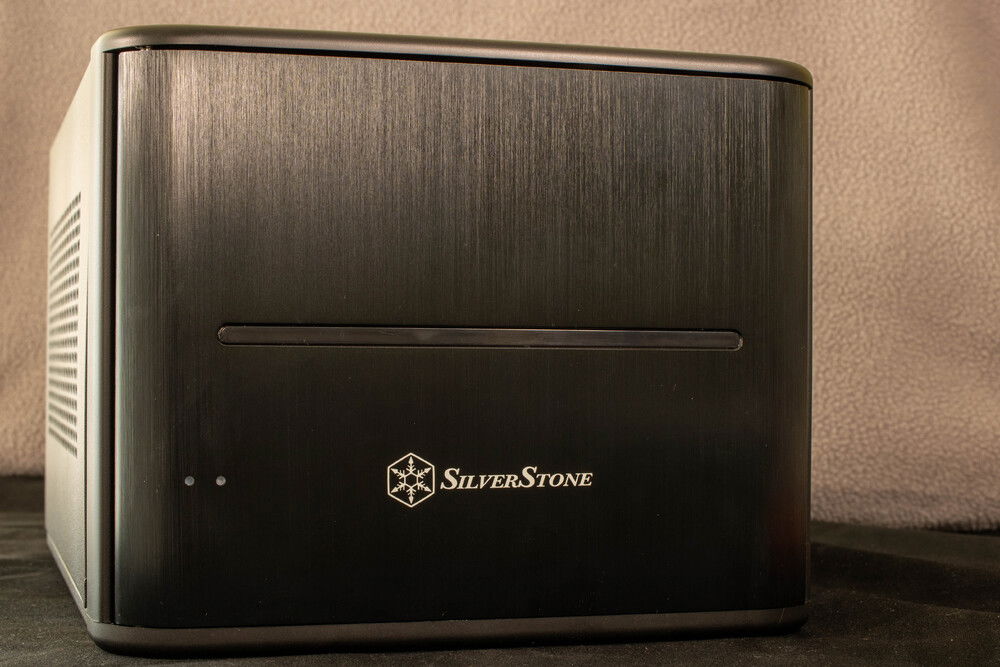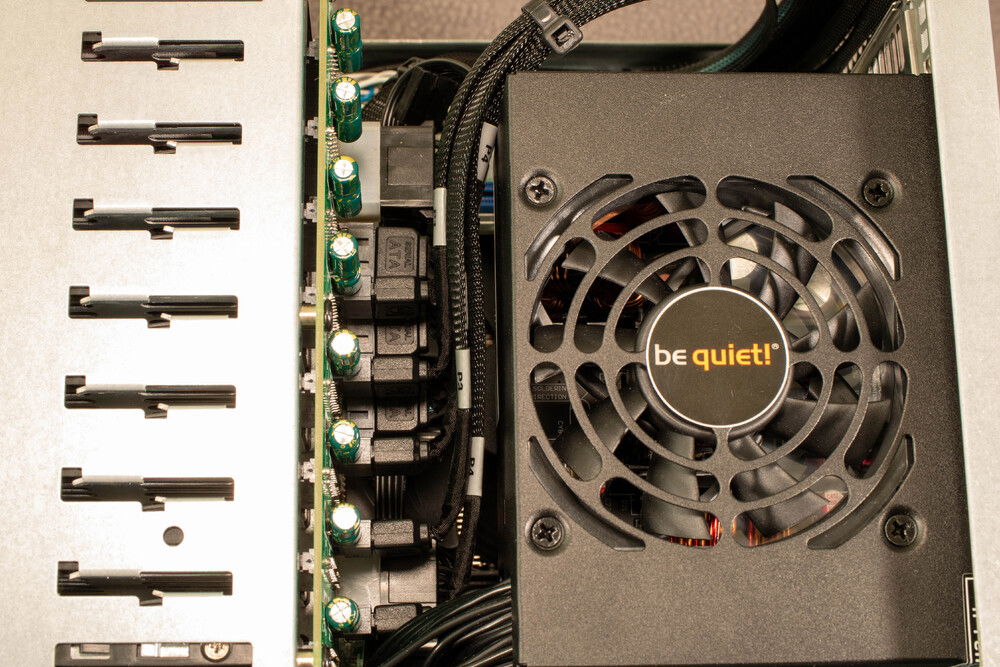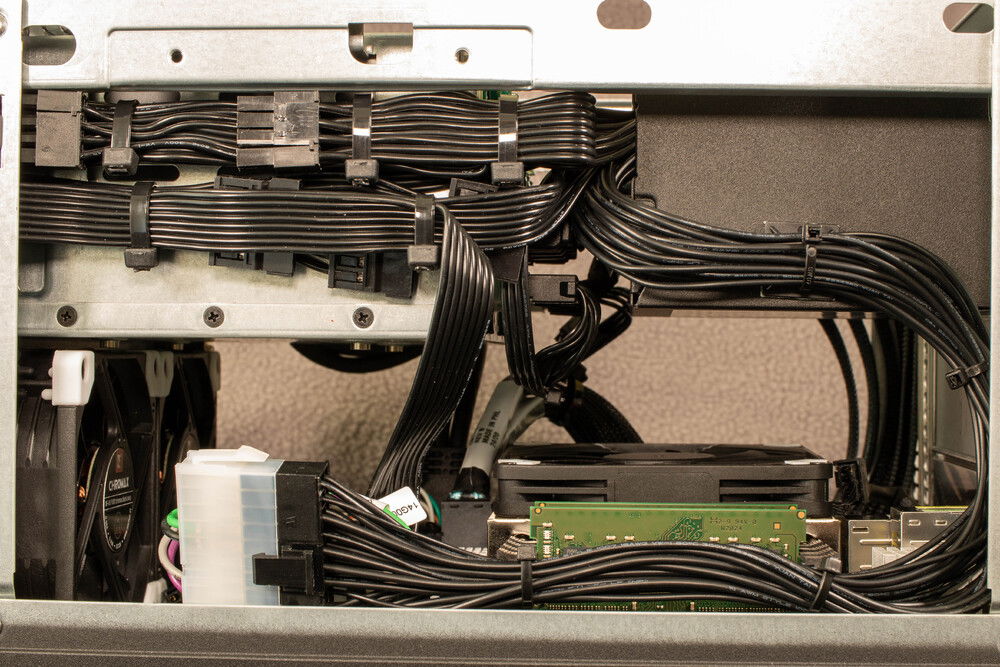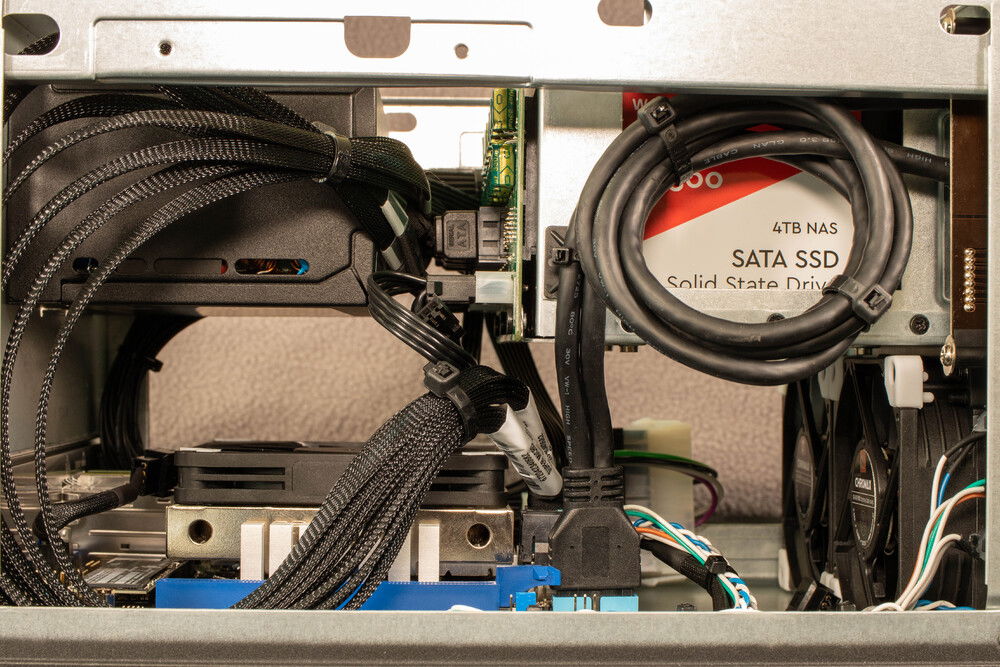Flash(y) Backup Server
Situation
I run a few servers for my and my family's personal use. This includes e-mail, nextcloud and a few others for my ever growing list of side projects. Of course these servers need to have proper backups, up until now these backups went to an old PC of mine, equipped with a bunch of harddisks. While that system did age pretty well, it was now time for a replacement.
I do not need a vast amount of storage, so going all SSD is an affordable option. To start off, I need about 5TB of capacity. As I use Samsung drives in my servers, I decided to go for Western Digital ones for the backups. Just to have one less problem to worry about (i.e. controller/firmware issues on both the live and the backup system). Three 4 TB drives will yield a usable capacity of around 6 TB in a BTRFS raid 1 array.
The case
The backup server will by in my office, therefore it should have a small footprint and be as quiet as possible. I decided to go for the Silverstone CS280 case, which comes with 8 hot-swappable 2,5 inch bays and is powered by a SFX power supply.
While the case is overall pretty nice, there are a few things that Silverstone could have done better in my opinion:
The mainboard
I had a few hard requirements on the board:
Additionally a few nice-to-have features:
I decided to go for the ASrock Rack E3C246D4I-2T. While the platform is a bit dated, it still ticked pretty much all of the boxes and I could even use the i3-8100T CPU I had laying around from a previous project. The board also has some downsides though:
The rest
I run a few servers for my and my family's personal use. This includes e-mail, nextcloud and a few others for my ever growing list of side projects. Of course these servers need to have proper backups, up until now these backups went to an old PC of mine, equipped with a bunch of harddisks. While that system did age pretty well, it was now time for a replacement.
I do not need a vast amount of storage, so going all SSD is an affordable option. To start off, I need about 5TB of capacity. As I use Samsung drives in my servers, I decided to go for Western Digital ones for the backups. Just to have one less problem to worry about (i.e. controller/firmware issues on both the live and the backup system). Three 4 TB drives will yield a usable capacity of around 6 TB in a BTRFS raid 1 array.
The case
The backup server will by in my office, therefore it should have a small footprint and be as quiet as possible. I decided to go for the Silverstone CS280 case, which comes with 8 hot-swappable 2,5 inch bays and is powered by a SFX power supply.
While the case is overall pretty nice, there are a few things that Silverstone could have done better in my opinion:
- Clearance between backplane and power supply is almost non-existent. With a modular power supply, you cannot plugin normal SATA cables anymore, with angled connectors it would be possible, but the connecter spacing on the backplane is not really made for those. All in all the limited clearance forces you to do some compromises that would not be necessary if the case was only half an inch deeper.
- The dual expansion slots are pretty much useless in my opinion. Realistically, you can put only low-profile expansion cards in there anyway, as the SSD cage and power supply will block higher cards. So the case could be made a bit less wide.
- The mount of the power supply is not ideal either in my opinion. It can only be mounted from the inside, which is a bit of a hassle especially with the limited clearance towards the sata backplane. I'd prefer having the possibility of sliding it in from the back using a mounting bracket.
- Why they keep adding this stupid, low quality front-panel audio connectors, especially for a case clearly targeted towards server/NAS builds I don't understand
.
The mainboard
I had a few hard requirements on the board:
- Support for ecc memory
- IPMI / iKVM
- Possibility to mount a proper cooler. Most SOC server boards come with a premouted heatsink that is designed to work in rack mounted cases with front-to-back airflow. For low tdp models this might be fine in a case like this, for higher TDP units (>40W) I personally would not be comfortable running it in a case without directed airflow.
Additionally a few nice-to-have features:
- 8 SATA ports would avoid the need for an additional HBA
- M.2/NVMe slot for the system drive
- 10 Gbps networking
- 3 fan headers, to avoid splitters or additional fan controllers
- USB 3.0 front panel header (unfortunately not a standard feature on server boards)
I decided to go for the ASrock Rack E3C246D4I-2T. While the platform is a bit dated, it still ticked pretty much all of the boxes and I could even use the i3-8100T CPU I had laying around from a previous project. The board also has some downsides though:
- SO-DIMM memory meant I could not re-use components I already had laying around as ECC SO-DIMM is not that common.
- The board uses the rather uncommon OCulink connectors for the SATA interfaces. While I understand there is not enough room on the board to add normal SATA ports, I would have preferred ASrock using the more common MiniSAS HD connectors.
- It is quite expensive, however if you take into account that you don't need an additional SATA controller or a 10 Gbps NIC, the price is actually pretty reasonable, at least for a server board.
- Availability
The rest
- For the CPU I use an Intel Core i3-8100T as I had it laying around from a previous project and it is powerful enough for this build
- The CPU cooler I also had already laying around, it is a regular NH-L9i with its fan replaced by a chromax one
- For the memory I had no hard requirements besides that it should be ECC and 16GB of total capacity. So I use a pair of 8GB Kingston sticks that were available from my retailer.
- I decided to use a M.2 NVMe as the system drive. While SATA would have been more than enough performance wise, I wanted to have all 8 hot-swap bays available for data drives. Using a SATA drive in the M.2 slot would have used up one of the SATA lanes on the OCulink. I decided to go with a SN750, it is clearly overkill, but it was on sale at my goto retailer.
- While I had a nice Corsair SF450 laying around, it unfortunately does not fit with the limited space in the case
. That is a shame, I really would have loved to use some custom SFF cables. As for non-modular power supplies, the selection is quite sparse. There are a few units from Silverstone, but those seem to be quite noisy. I ended up purchasing a be quiet! unit, but as there are no reviews to be found for that unit, I have no idea how good it is. Time will tell I guess.
- Finally, I replaced the stock case fans with higher quality noctua's. Just be aware that you need to disassamble pretty much the whole case to do so
Color(s): Black
RGB Lighting? No
Theme: none
Cooling: Air Cooling
Size: Mini-ITX
Type: General Build
Hardware
CPU
$ 69.00
Motherboard
$ 634.42
Memory
$ 121.98
Graphics
Storage
$ 24.99
Storage
$ 1,169.70
Case
$ 200.88
Case Fan
$ 47.90
Case Fan
$ 23.95
Cooling
$ 49.95
Approved by:
